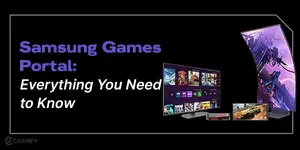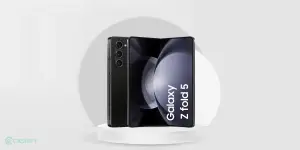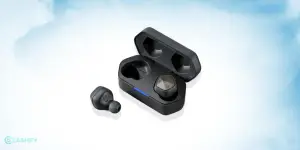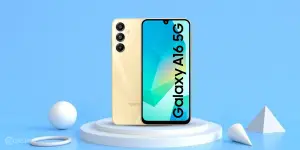Netflix, Amazon Prime, and Hotstar are revolutionizing media consumption across the world. They cater to their growing subscribers base with excellent quality of content and an immense catalog. These content providers not only offer FullHD and 4K content but are now also slowly shifting to support HDR or High Dynamic Range content to the subscribers. HDR is a display standard that is currently offered by Netflix and Amazon Prime on some of its content. With smartphones getting better each day, we now have a lot of Android and iOS smartphones that support delivery of HDR content on mobile devices.
Also Read: Keep Your Children Busy During Quarantine With These FREE iOS Apps
HDR 10 – What exactly is it?
Before going ahead with the best smartphones to consume the HDR content from the various online streaming providers, it is important to understand what HDR exactly is. The term HDR stands for High Dynamic Range and now there are multiple terminologies for it such as HDR 10, Dolby Vision, HLG (Hybrid Log Gamma) or HDR10+ which was introduced by Samsung. HDR is the ability of a display to show bright highlights and dark shadows accurately. This helps immerse the viewers in a wide gamut of colors on the display. HDR10 is an open-source format that is developed by the UHD Alliance and is currently widespread, if your phone supports HDR content then it should be able to play the HDR10 videos. Theoretically speaking, HDR10 currently supports 10-bit color depth and up to 4,000 nits of peak brightness, however, the best of the smartphone displays max out at around 1,000 nits.
To stream HDR content on Netflix ensure that you have the latest Netflix application on your smartphone, you will need a 4 Screen Netflix plan as the other plans don’t come with support for HDR streaming. You will need to set the streaming quality to High in the settings and have an internet connection of at least 25 megabits per second. And of course, you will need a smartphone that supports HDR content, here we list out the top 5 smartphones with the best displays that make it a good choice for viewing HDR content on the move.
Samsung Galaxy S20/Plus/Ultra
The new Samsung Galaxy S20 series of smartphones come with support for HDR content. Samsung has always been applauded for its displays and the quality seems to constantly grow. The latest Samsung Galaxy S20 comes with a 6.2-inch display that has a resolution of 1440 x 3200. The smartphone uses a Dynamic AMOLED display with support for over 16 million colours. The Samsung Galaxy S20 series also support HDR10+ content on the move and is one of the best choices for consuming media content. The display has a 563 pixel per inch density which is one of the highest in smartphone displays. The 20:9 aspect ratio is unconventional but offers a good viewing experience by taking up most of the front real estate. The display on the Galaxy S20 series supports 120Hz refresh rate in FullHD or 60Hz at QuadHD resolution, while 120Hz refresh rate doesn’t make much of a difference while streaming online content, it does make a massive difference with daily usage and while playing games. The front display is also protected by the Corning Gorilla Glass 6 to ensure rigidity and protect the display from shattering.
Key Features:
- Quad HD Resolution display for high-resolution content
- Support for HDR10+ content for the best viewing experience
- 20:9 aspect ratio paired with a 563 pixel per inch display density
- Support for 120Hz at FullHD for a smoother daily experience
- The Dynamic AMOLED display produces one of the best colors and is extremely bright
Price: Samsung Galaxy S20(Rs 66,990) Galaxy S20+(Rs 73,990), and Galaxy S20 Ultra (Rs 92,999)
Also Read: Samsung Galaxy S20 Plus Review
iPhone 11 Pro Max
iPhone 11 Pro Max is one of the only smartphones in the market right now that comes with Dolby Vision support. The iPhone 11 Pro Max has a 6.5-inch display with a resolution of 1242 x 2688. This brings the pixel density to a decent 458 pixel per inch which isn’t too high or too low. The device also additionally supports HDR10 for a wide colour gamut. The display is a Super Retina XDR OLED panel with amazing colour reproduction. The peak brightness is advertised at 800 nits and the display uses True Tone technology to adjust the colours to your surroundings. The iPhone 11 Pro Max comes with a Scratch-resistant oleophobic coating to protect the glass from scratch and to prevent shattering. The device also has a pretty good battery life despite the smaller capacity battery, the software on the device is well optimised and everything is in sync to ensure the best video output possible.
Key Highlights:
- Uses a Super Retina XDR OLED Panel
- Supports HDR 10 and Dolby Vision for best possible output
- Comes with support for True Tone adjustments
- Has a peak brightness of 800 nits
Price: iPhone 11(Rs 64,900), iPhone 11 Pro (Rs 99,000), and iPhone 11 Pro Max (Rs 1,09,000)
Also read: iPhone 11 Pro Max Review
Realme X2 Pro
The Realme X2 Pro comes with a 6.5-inch display and has a resolution of 1080 x 2400. The device has an amazing display and supports a 90Hz refresh rate. This is one of the only few devices apart from Samsung smartphones that support HDR10+ standard. The device comes with an advertised peak brightness of 1000 nits. The pixel density on the device is about 402 pixels per inch which is a little lesser than the competition but there isn’t anything to argue about for the given price. The device comes with a Super AMOLED display and has excellent picture reproduction overall. The display on the device is protected by Gorilla Glass 5 to prevent it from scratches or shattering. The display on the Realme X2 is amazing and is one of the best choices you can make at this price.
Key Highlights:
- HDR10+ display to ensure a wide colour gamut
- 1000 nits peak advertised brightness
- Super AMOLED display with excellent colour reproduction
- Support for 90Hz refresh rate for a smoother overall experience
- Much lower priced than other devices with similar specs and display
Price Rs 27,999
Also Read: Realme X2 Pro Review
ROG Phone 2
The Asus ROG Phone 2 comes with a 6.59-inch display with a resolution of 1080 x 2340, it was the first smartphone in India to come with an AMOLED display having a 120Hz refresh rate. The display quality on the ROG Phone 2 is pretty good too, the smartphone also comes with HDR10 support. The display on the ROG Phone 2 is also protected with Corning Gorilla Glass 6 and the touch sensitivity on the smartphone is 240Hz for a smoother response. The device has a 19.5:9 aspect ratio and comes with dual speakers, this adds to a great movie watching experience on the move. While the smartphone is inclined towards gaming, it doubles up as a great movie watching device as well. The smartphone has a 391 pixel per inch density which isn’t the highest in a smartphone but is well enough for most users. The smartphone comes with a massive 6,00mAh battery and 30W fast charging allowing you to go on a long movie run or binge watch an entire series without having to worry about your battery running out.
Key Highlights:
- AMOLED Display with good color reproduction
- Support for HDR10 content for a wide color gamut
- Massive 6,000mAh battery for extended hours of streaming
Price: Rs 37,999
Also Read: ROG Phone 2 Review
OnePlus 7T Pro

OnePlus 7T Pro is the successor to the OnePlus 7 Pro which was one of the smartphones that made high refresh rate a thing! The smartphone comes with a 6.67-inch display and has a resolution of 1440 x 3120 with a pixel density of 516 pixels per inch. The smartphone also supports HDR10+ standards and has a refresh rate of 90Hz. The display on the smartphone is protected by the Corning Gorilla Glass 5 to prevent it from scratches and shattering. The display on the smartphone is nearly bezel-less and offers a good viewing experience. The brightness on the display is adequate to have an enjoyable experience on the move.
Key Highlights:
- QuadHD resolution display with a 516 pixel per inch density
- Support for HDR10+ content to ensure a wider colour gamut
- Support for 90Hz refresh rate for smoother transitions and animations
- Nearly bezel-less display adding to the viewing experience
Price: Rs 52,999
Also read: OnePlus 7T Review
Update:
OnePlus 7 Pro
The OnePlus 7 Pro has been making a buzz in the Indian market for supporting the HDR 10+, a higher resolution, great brightness levels and vibrant hues. It comes with dual stereo speakers with Dolby Atmos and a microphone for noise cancellation. The phone is capable of giving you the experience of watching realistic, highlighted and in depth scenes. It has a fluid AMOLED display. With a 6.67″ display, the phone is exceptionally good for watching movies and other programmes on all the main online streaming platforms such as Netflix, Amazon Prime and Disney + Hotstar.
- Bezel Display.
- Screen aspect ratio of 19.5:9
- Pixel Density of 515 ppi.
- Vivid, Natural and an Advanced option to adjust the colour temperature.
- Corning Gorilla Glass v5 for protecting the screen.
- Screen to body ratio is calculated to be 88.3 %.
- Refresh Rate of 90Hz.
- 1440 x 3120 pixels screen resolution.
- Peak brightness of 4000 nits.
Oppo Find X2 Pro
With a stunning ultra vision screen, 3K QHD+ resolution and clarity, the Oppo Find X2 Pro is the best in case of offering a bright and a 6.67” display for you to watch your favourite shows. A 240Hz touch sampling rate ensures immediate and precise responses. The screen refresh rate makes sure that the user gets the smoothest experience. With over one billion colours, the details are exact and beautiful. The O1 Ultra Vision Engine with Dolby Atmos and dual stereo speakers are truly captivating.
- AMOLED capacitive touchscreen.
- Screen aspect ratio of 19.8:9.
- 90.9% screen-to-body ratio.
- 1440 x 3168 pixels screen resolution.
- 513 ppi density.
- Corning Gorilla Glass 6.
- Supports HDR10+.
- Smooth 120Hz refresh rate.
- 800 nits maximum brightness.
















